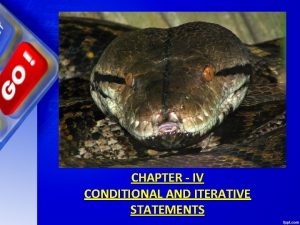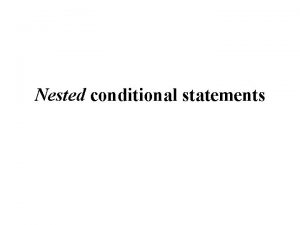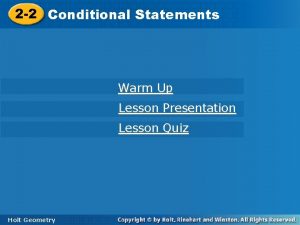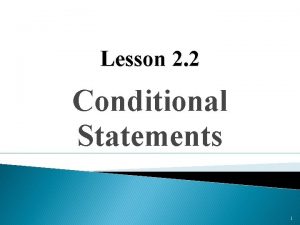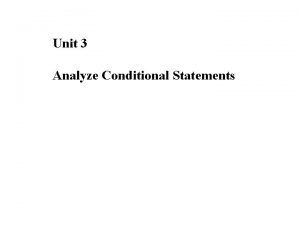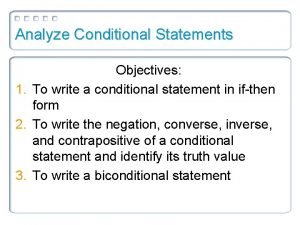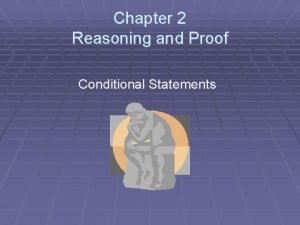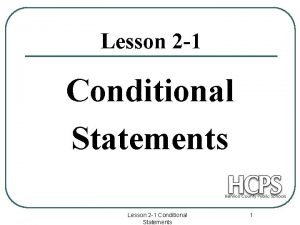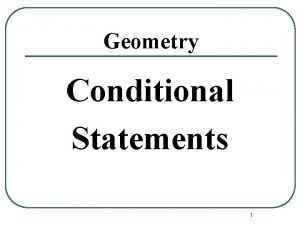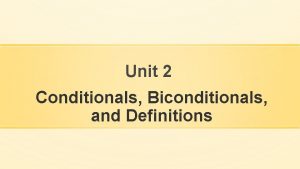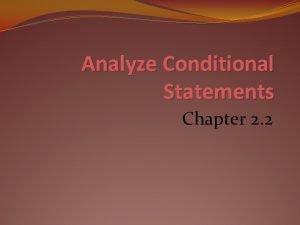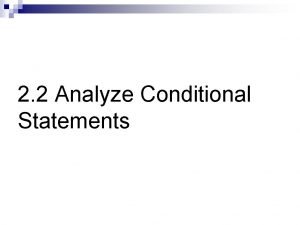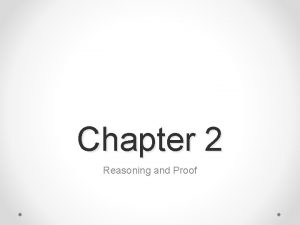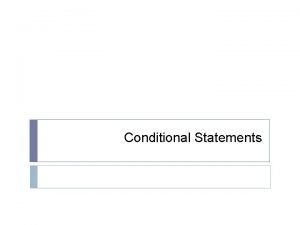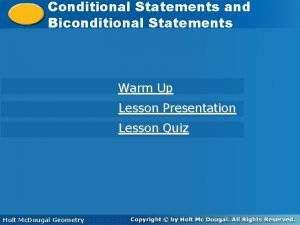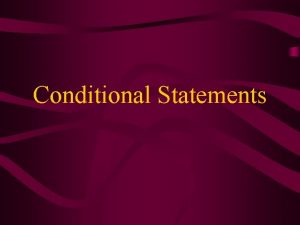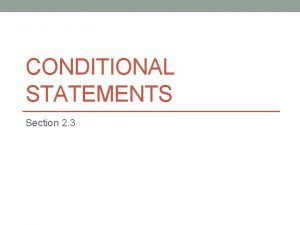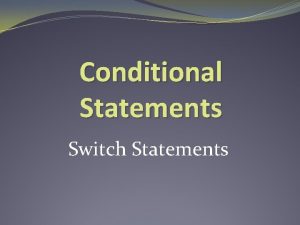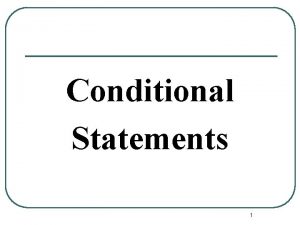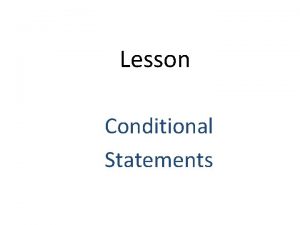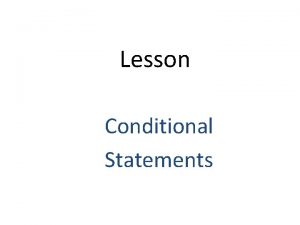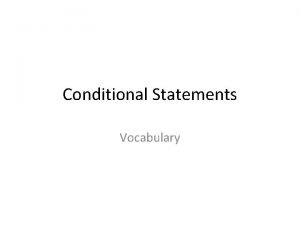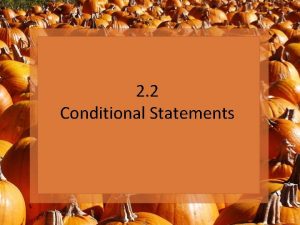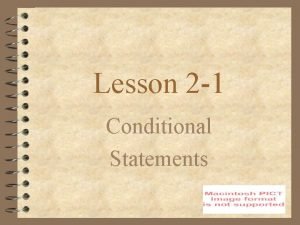2 1 Conditional Statements Conditional Statement Conditional statement














- Slides: 14

2. 1 Conditional Statements

Conditional Statement ã Conditional statement has two parts, hypothesis and a conclusion. ã If _______, then______. hypothesis conclusion

Rewrite in If-Then form ã A number divisible by 9 is also divisible by 3. Ý ã If a number is divisible by 9, then it is divisible by 3. Two points are collinear if they lie on the same line. Ý If two points lie on the same line, then they are collinear.

Writing a Counterexample ã Write a counterexample to show that the following conditional statement is false. Ý If x 2 = 16, then x = 4.

Converse ã Two points are collinear if they lie on the same line. If two points are collinear, then they lie on the same line. Conditional Statement Ý If two points lie on the same line, then they are collinear. Converse Ý

ã A statement can be altered by negation, that is, by writing the negative of the statement. Statement: m<A = 30° Ý Negation: m < A ≠ 30° Ý Statement: <A is acute. Ý Negation: <A is not acute. Ý

Inverse ã If two points lie on the same line, then they are collinear. Conditional ã If two points do not lie on the same line, then they are not collinear. Inverse

Contrapositive ã If two points lie on the same line, then they are collinear. Conditional ã If two points are not collinear, then they do not lie on the same line. Contrapositive

ã When two statements are both true or both false, they are called equivalent statements. A conditional statement is equivalent to its contrapositive. Ý The inverse and converse of any conditional statement are equivalent. Ý

ã Write the a) inverse Ý b) converse Ý c) contrapositive If there is snow on the ground, then flowers are not in bloom. Ý If there is no snow on the ground, then flowers are in bloom. b) If flowers are not in bloom, then there is snow on the ground. c) If flowers are in bloom, then there is no snow on the ground. a)

Point, Line, and Plane Postulates ã Postulate 5 Ý Through any two points there exists exactly one line. ã Postulate 6 Ý ã A line contains at least two points. Postulate 7 Ý If two lines intersect, then their intersection is exactly one point.

ã Postulate 8 Ý Through any three noncollinear points there exists exactly one plane. ã Postulate 9 Ý A plane contains at least three noncollinear points. ã Postulate 10 Ý If two points lie in a plane, then the line containing them lies in the plane.

ã Postulate 11 Ý If two planes intersect, then their intersection is a line.

Review ã Write the converse of the conditional statement. Ý If x = 3, then y = 7. Ý If Carrie joins the softball team, then Mary will join. Ý If two angles are vertical, then their measures are equal.
 Conditional and iterative statements
Conditional and iterative statements Nested conditional statements
Nested conditional statements 2-2 conditional statements
2-2 conditional statements 2 conditional statements
2 conditional statements Unit 3 lesson 1 conditional statements
Unit 3 lesson 1 conditional statements Symbol of conditional statement
Symbol of conditional statement Arduino conditional statements
Arduino conditional statements Unit 2 logic and proof homework 3 conditional statements
Unit 2 logic and proof homework 3 conditional statements First conditional and future time clauses
First conditional and future time clauses Biconditional statement
Biconditional statement Contrapositive statement geometry
Contrapositive statement geometry Conditionals and biconditionals
Conditionals and biconditionals Conditional statements examples
Conditional statements examples 2-2 conditional statements
2-2 conditional statements Unit 2 homework 3 conditional statements
Unit 2 homework 3 conditional statements
